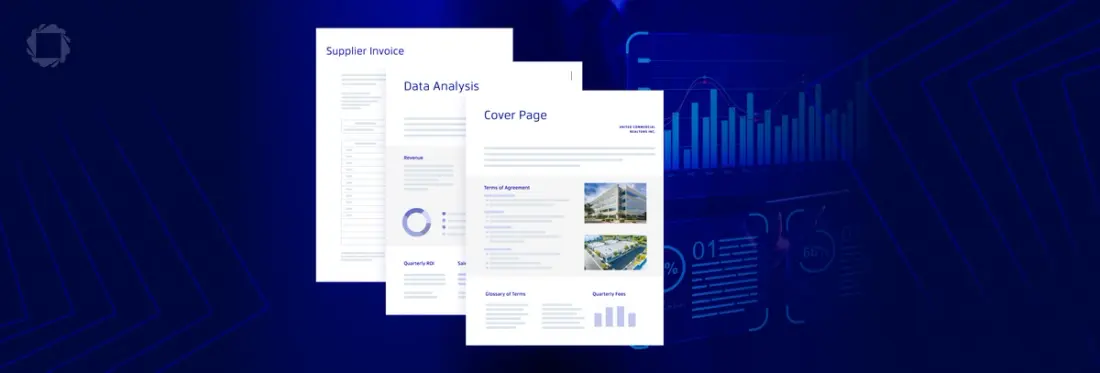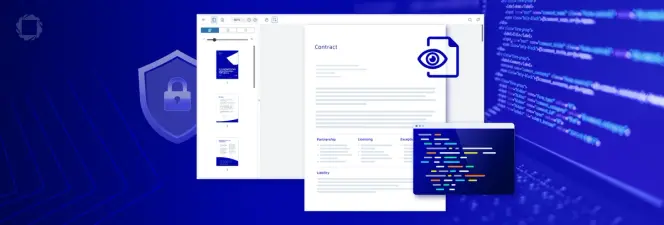What is a Multi-Section Narrative Report?
By Kelly Gillespie | 2024 Jan 04

4 min
Tags
fluent
document generation
report generation
A multi-section narrative report is a comprehensive document designed to convey complex information in a structured and organized manner. These reports typically feature several distinctive elements that make them easy to identify:
- Cover Page: Multi-section narrative reports often begin with a cover page that includes essential information such as the report title, the organization's logo, the author's name, and the date of publication. The cover page serves as an initial point of reference for the report's content.
- Self-Updating Table of Contents: To facilitate easy navigation and reference, these reports typically include a self-updating table of contents. This dynamic table of contents allows readers to click on sections or headings, which then takes them directly to the relevant part of the report. This feature enhances the report's accessibility and usability.
- Multiple Sections: As the name suggests, multi-section narrative reports consist of multiple distinct sections. These sections are usually organized logically and sequentially to guide the reader through the report's content. Each section may address a specific aspect of the topic under consideration, such as data analysis, recommendations, test results, maintenance requirements, or job assignments.
- Complex Table Layouts and Graphs: These reports often incorporate complex table layouts, graphs, and visualizations. These elements are used to present data and information in a visually engaging and comprehensible way. Complex data sets are transformed into clear and actionable insights, making it easier for the reader to understand the information at a glance.
These reports are versatile and are used in various industries and for multiple purposes. They play a critical role in decision-making, compliance, and performance improvement, offering a structured way to communicate complex information effectively. Multi-section narrative reports are indispensable tools for managing data, operations, and resources. There are many examples of these kinds of reports.
- Compliance Reporting: One common use of multi-section narrative reports is for compliance reporting. In this context, organizations use such reports to demonstrate adherence to specific regulations or standards. These reports detail the steps taken to ensure compliance and may include data on audits, inspections, and corrective actions.
- Consultative Reporting: Multi-section narrative reports are also frequently used for consultative reporting. These reports involve the analysis of an organization's current operations, and the findings are then transformed into recommendations for improving business operations and increasing profitability. This can include cost-saving measures, efficiency enhancements, or strategic changes.
- Surveys and Inspections: These reports may include the results of surveys or inspections conducted to assess the condition of equipment, operations, or facilities. Field inspectors or even drones can capture photographs and data to determine if repairs, upgrades, or changes are necessary to improve operations, safety, or compliance.
- Medical Test Results: In the healthcare sector, multi-section narrative reports are used to present the results of medical tests, outcomes, and patient records. These reports are crucial for diagnosing and treating patients and for maintaining accurate medical records.
- Maintenance Requirements: Reports detailing maintenance requirements for equipment and machinery are vital in industries like manufacturing, construction, and transportation. They outline the necessary maintenance tasks, schedules, and resources required to keep equipment in optimal working condition.
- Job Assignments: Multi-section narrative reports can also be used to assign tasks, detailing which skilled workers and equipment are needed for specific jobs on a job site. This information helps ensure that the right resources are allocated efficiently and at the right price.
Want to learn more about Fluent? Check out our recent webinar.
Given their versatility, these reports cater to various industries and serve multiple purposes. They are pivotal tools for decision-making, offering a comprehensive view of data and operations. Their structured and data-rich nature assists stakeholders in making informed decisions, implementing improvements, and ensuring operations are efficient and compliant with standards.
As technology advances and data becomes more accessible, these multi-section narrative reports continue to evolve, incorporating more sophisticated visualizations and analysis methods to present complex information in an easily digestible manner.
Fluent allows for the automation or creation of these types of reports from dynamic data into customer facing outputs ready to be delivered. Typically, these reports are maintained by individuals with a lot of education and specific industry experience or skill.
Having these individuals hand make each instance of these reports is super inefficient and costly. Now with the use of our technology we are automating these reports using intelligent tags that make decisions based on the data they consume. Find out how by requesting a demo today.
Tags
fluent
document generation
report generation

Kelly Gillespie
Share this post


